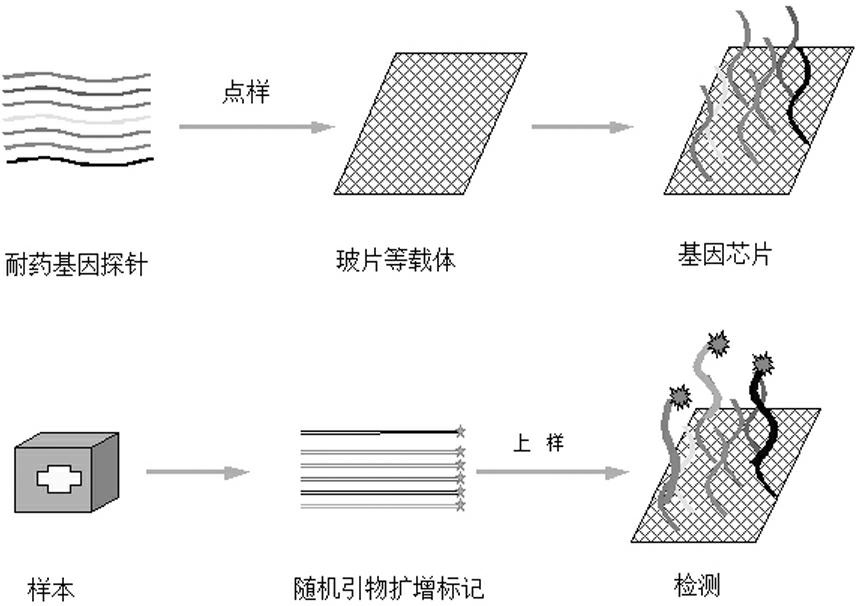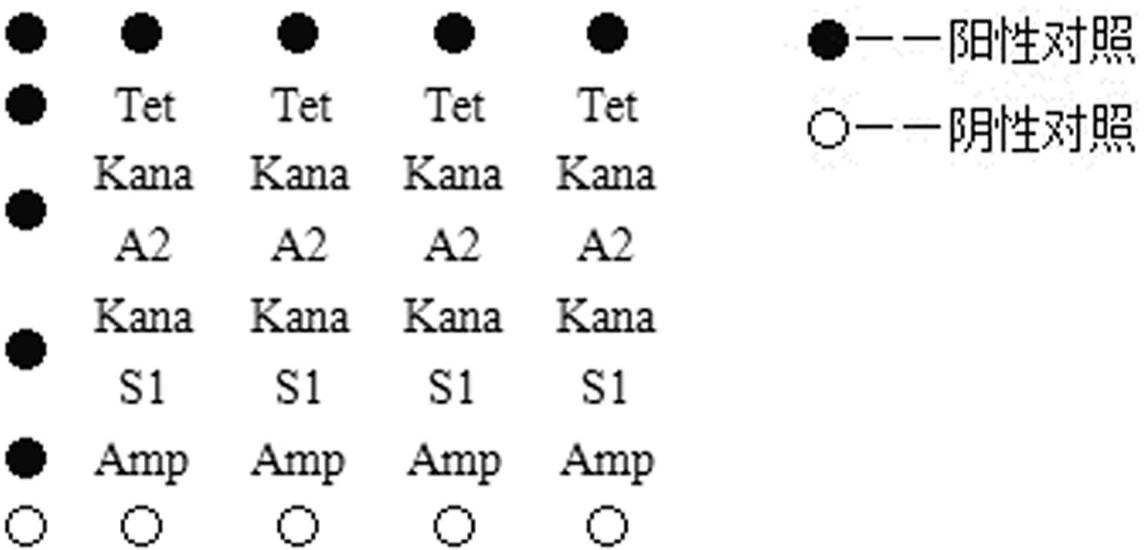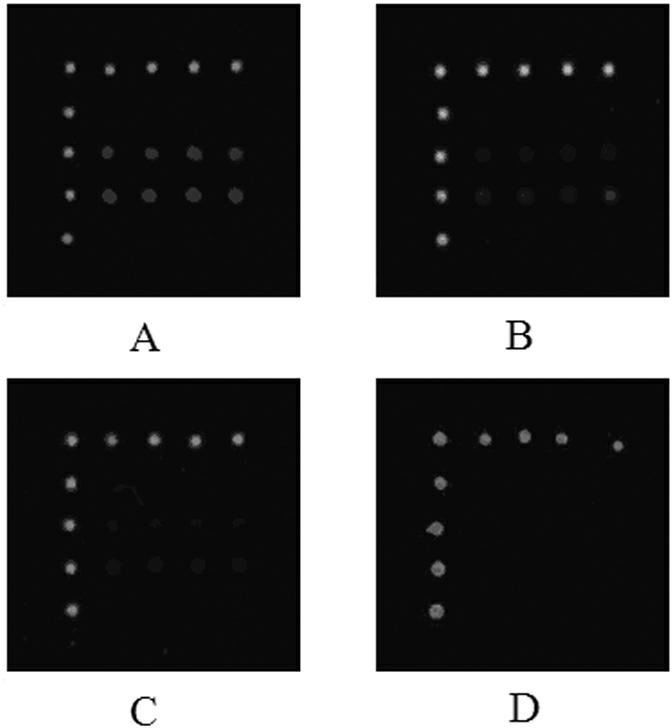Detection chip for drug resistance gene of bacteria, and application thereof
A gene detection chip and drug-resistant gene technology, which is applied in the field of gene detection chip of cause, erythromycin resistance, disinfectant resistance, aminoglycoside drug resistance gene, bacterial drug resistance gene, can solve difficult to realize, operation steps It is cumbersome and cannot reflect the source and transmission mechanism of bacterial resistance, etc.
- Summary
- Abstract
- Description
- Claims
- Application Information
AI Technical Summary
Problems solved by technology
Method used
Image
Examples
Embodiment 1
[0348] Example 1. Detection of Kana and Amp drug-resistant Escherichia coli by drug-resistant gene chip
[0349] Gene chips were prepared with synthetic gene probes to detect genetically engineered recombinant Escherichia coli containing Kana and Amp drug-resistant genes.
[0350] 1. Extraction and labeling of sample nucleic acid
[0351] Bacterial Genomic DNA Extraction kit was used to prepare bacterial whole genome DNA, and the operation was performed according to the instructions. Adjust the DNA to 1 μg / μl, then 4-fold serial dilution, the DNA concentration of the final sensitivity experiment is 80ng / μl, 20ng / μl, 5ng / μl, 0.8ng / μl, 0.2ng / μl, random primer labeling method Cy3 Incorporate dCTP into DNA, see below for the reaction system
[0352] Whole Genome DNA 2μg
[0353] Random primer (2nmol / μl) 2μl
[0354] Add ddH2O to a total volume of 10 μl, at 97°C for 3 minutes and 50 seconds, then ice bath for 3 minutes.
[0355] Place on ice and add:
[0356] 1M Cy3 d...
Embodiment 2
[0371] Example 2. Detection of extended-spectrum β-lactamase drug-resistant strains by bacterial drug-resistant gene chip
[0372] The widespread use of extended-spectrum β-lactamases (ESBLs) antibiotics such as cephalosporins in clinical practice has led to an increase in the detection rate of ESBLs-producing strains, which are mainly mediated by SHV and CTX-M genes in China. The performance of multi-drug resistance brings difficulties to clinical treatment. Compared with traditional detection methods, gene chips have unique advantages in the detection of infectious diseases. In this experiment, a bacterial drug resistance gene detection chip was established, and the detection conditions of the chip were optimized to determine the drug resistance of some samples.
[0373] 1. Chip Preparation
[0374] A silanized glass slide was selected as the chip carrier, soaked in 5% glutaraldehyde for 50 min, ultrasonically cleaned twice with ddH2O, and placed in a dry place for late...
Embodiment 3
[0382] Example 3. Detection of cephalosporin-resistant strains by bacterial drug-resistant gene chip
[0383] Among drug-resistant Gram-negative bacteria, cephalosporin-resistant bacteria (AmpC) pose a great threat to health. AmpC has a wider substrate spectrum than ESBL and is insensitive to enzyme inhibitors, which can lead to severe drug resistance of bacteria. Treatment is difficult and the mortality rate is high. Rapid, accurate, and high-throughput diagnosis of pathogenic bacteria and detection of drug resistance genes are the key to the prevention and control of infectious diseases. We established a bacterial drug resistance gene detection chip, and carried out detection and comparison on some samples.
[0384] 1. Bacterial whole genome extraction and labeling
[0385] After the enrichment culture of each strain, the whole genome DNA of the bacteria was extracted according to the operating procedures in the instruction manual of the Bacterial Genomic DNA Extractio...
PUM
| Property | Measurement | Unit |
|---|---|---|
| Sensitivity | aaaaa | aaaaa |
Abstract
Description
Claims
Application Information
 Login to View More
Login to View More - R&D
- Intellectual Property
- Life Sciences
- Materials
- Tech Scout
- Unparalleled Data Quality
- Higher Quality Content
- 60% Fewer Hallucinations
Browse by: Latest US Patents, China's latest patents, Technical Efficacy Thesaurus, Application Domain, Technology Topic, Popular Technical Reports.
© 2025 PatSnap. All rights reserved.Legal|Privacy policy|Modern Slavery Act Transparency Statement|Sitemap|About US| Contact US: help@patsnap.com



